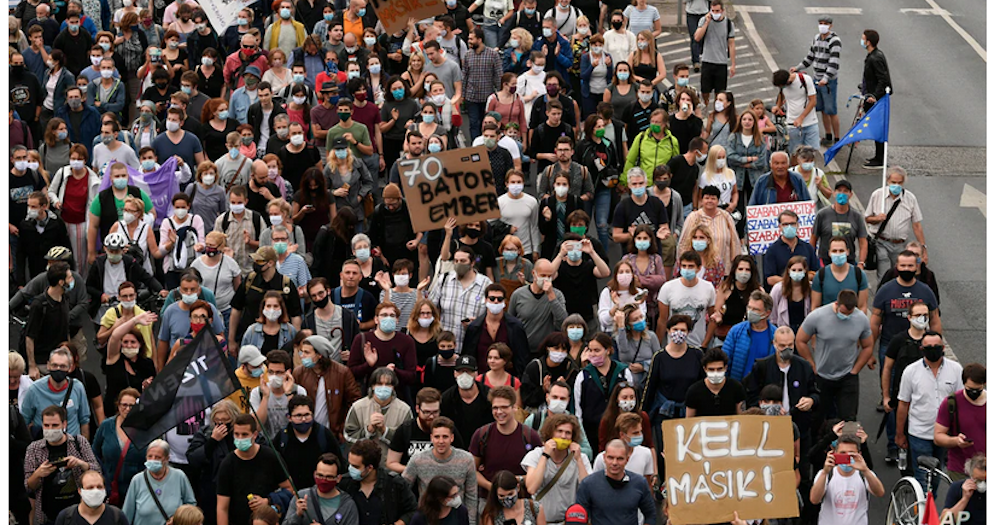Utilising this wide range of mechanisms to limit, isolate, defund and intimidate critical outlets is an effective and hard to track method through which state power can be exerted. Even if the broadcaster can muster a defence, how do you defend against so many different forms of attacks? This strategy also affords a degree of bureaucratic secrecy that can cloak these attacks in assumed legality, formality and robustness, while also obscuring it from public view.
This is not isolated to Klubrádió alone. Financial strangulation, opaque ownership structures and the manipulation of access to the licenses and technology necessary to broadcast are all approaches that have been deployed against media outlets in Hungary. Perhaps the most iconic example of this is KESMA.
KESMA exerts its influence
KESMA, or the Közép-Európai Sajtó és Média Alapítvány (Central European Press and Media Foundation), is a non-profit foundation that was formed in September 2018. According to its mission statement, KESMA aims to “contribute to the formation of Hungarian public discourse based on national values and to the upbringing of the next generation of our community.” In the two years since its formation, over 470 media outlets have found their way to being controlled by the foundation, which is dominated by pro-Fidesz trustees, including the lawyer, Dr. István Bajkai, who had once been Orbán’s personal lawyer and Zoltan Hegedus, a former Fidesz mayoral candidate for Hódmezővásárhely. KESMA exerts significant influence over the media landscape. According to analysis commissioned by the European Parliament’s Green group and carried out by the Mertek Media Monitor, of the 246.5 billion Hungarian forint spent by the state in 2017 on the media, KESMA accounted for 24% of that money. When combined with other government-related private media and publicly funded media, this concentration increases to 77.8%. This influence extends beyond controlling the media output alone. According to The Atlantic who interviewed Attila Babos and Ervin Gűth of Szabad Pécs, “private businesses are reluctant to advertise in non-KESMA outlets, fearing government retaliation.”
While the existence and consolidation of media outlets within KESMA ensures their continued existence – Ágnes Urbán told Quentin Ariès of The Atlantic “that the majority of KESMA organizations would not be financially sustainable without the state’s advertising” – its dominance squeezes out independent or critical outlets and reinforces the precariousness of the media environment. In July 2020, the editorial board of Index.hu and the majority of journalists resigned in protest of the sacking of its editor-in-chief, Szabolcs Dull, following the leaking of a controversial business plan which showed drastic changes to the editorial team.
Fidesz and the Hungarian Government hide behind the absence of killed or imprisoned journalists as a testament to the robust media freedom environment in the country. This only holds true if those were the only diagnostic tools we use. The manipulation of ownership, state capture of regulators and formerly independent outlets, government advertising revenue and the granting of licenses are methods by which the media environment can be skewed in favour of the government and it will not stop at Hungary. This model is already being exported across Central Europe, most notably in Poland, as part of the repolonisation campaign undertaken by the governing Law and Justice party (PiS). Elements of the model are already being copied in Slovenia under the leadership of Prime Minister, Janez Janša.
PrintNik Williams | Radio Free (2021-02-08T11:51:41+00:00) A shrinking space: media capture in Orbán’s Hungary. Retrieved from https://www.radiofree.org/2021/02/08/a-shrinking-space-media-capture-in-orbans-hungary/
Please log in to upload a file.
There are no updates yet.
Click the Upload button above to add an update.
